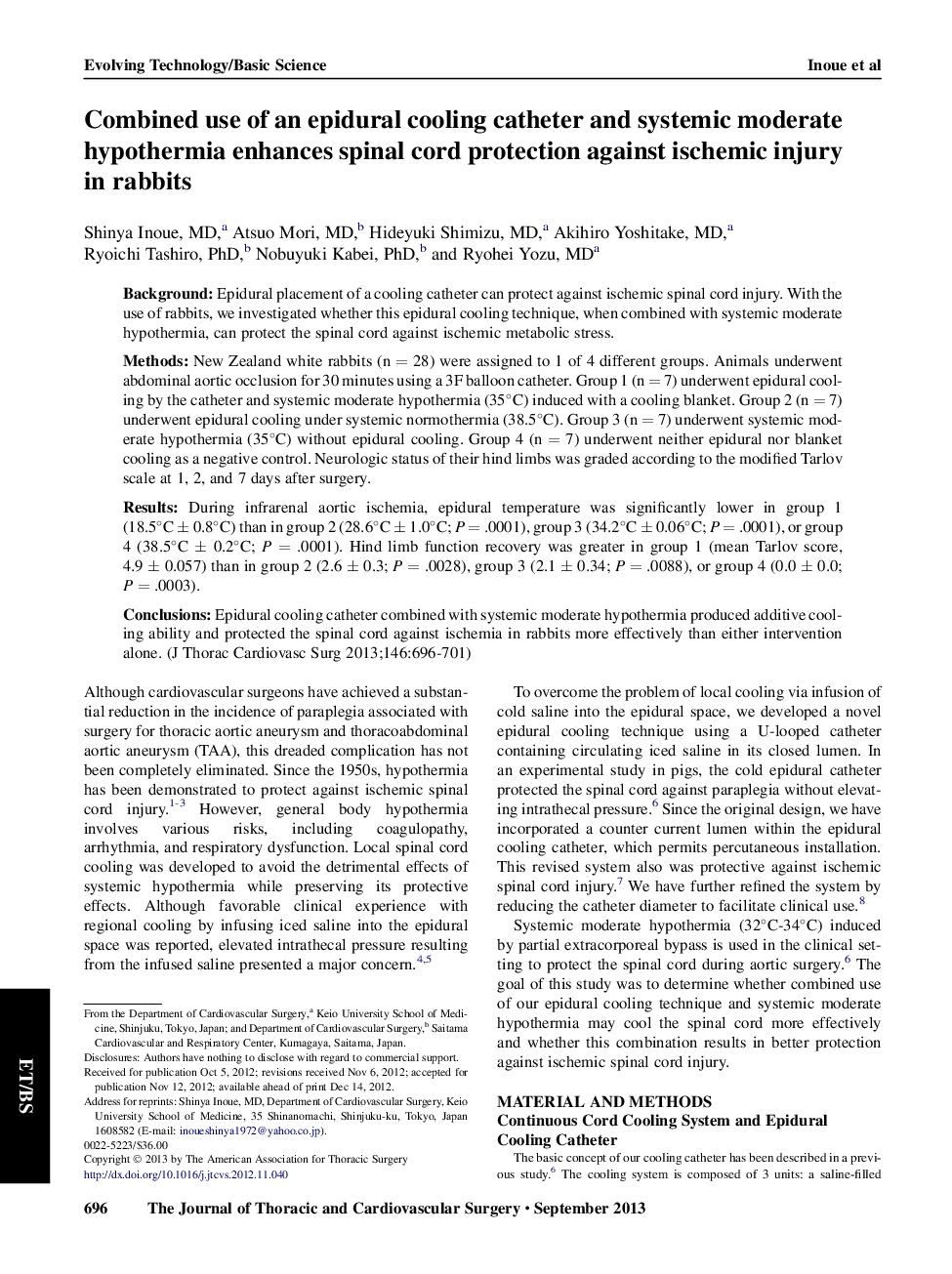| Article ID | Journal | Published Year | Pages | File Type |
|---|---|---|---|---|
| 5990147 | The Journal of Thoracic and Cardiovascular Surgery | 2013 | 6 Pages |
BackgroundEpidural placement of a cooling catheter can protect against ischemic spinal cord injury. With the use of rabbits, we investigated whether this epidural cooling technique, when combined with systemic moderate hypothermia, can protect the spinal cord against ischemic metabolic stress.MethodsNew Zealand white rabbits (n = 28) were assigned to 1 of 4 different groups. Animals underwent abdominal aortic occlusion for 30 minutes using a 3F balloon catheter. Group 1 (n = 7) underwent epidural cooling by the catheter and systemic moderate hypothermia (35°C) induced with a cooling blanket. Group 2 (n = 7) underwent epidural cooling under systemic normothermia (38.5°C). Group 3 (n = 7) underwent systemic moderate hypothermia (35°C) without epidural cooling. Group 4 (n = 7) underwent neither epidural nor blanket cooling as a negative control. Neurologic status of their hind limbs was graded according to the modified Tarlov scale at 1, 2, and 7 days after surgery.ResultsDuring infrarenal aortic ischemia, epidural temperature was significantly lower in group 1 (18.5°C ± 0.8°C) than in group 2 (28.6°C ± 1.0°C; P = .0001), group 3 (34.2°C ± 0.06°C; P = .0001), or group 4 (38.5°C ± 0.2°C; P = .0001). Hind limb function recovery was greater in group 1 (mean Tarlov score, 4.9 ± 0.057) than in group 2 (2.6 ± 0.3; P = .0028), group 3 (2.1 ± 0.34; P = .0088), or group 4 (0.0 ± 0.0; P = .0003).ConclusionsEpidural cooling catheter combined with systemic moderate hypothermia produced additive cooling ability and protected the spinal cord against ischemia in rabbits more effectively than either intervention alone.
